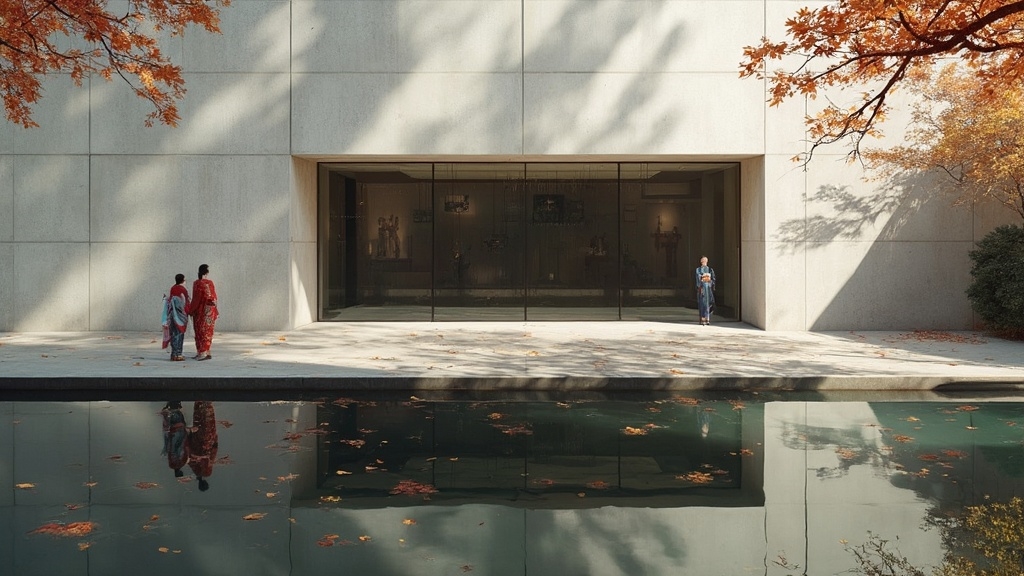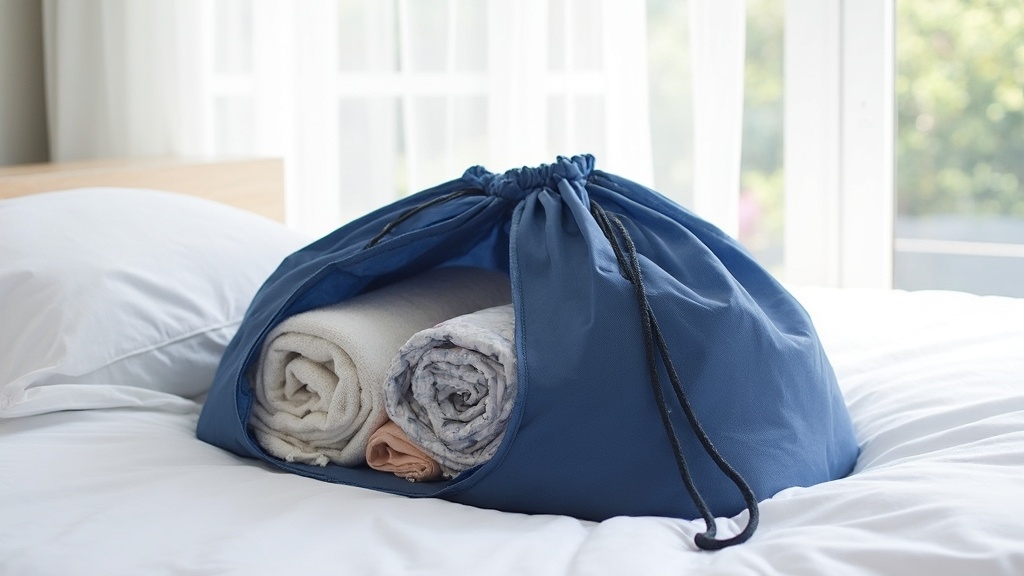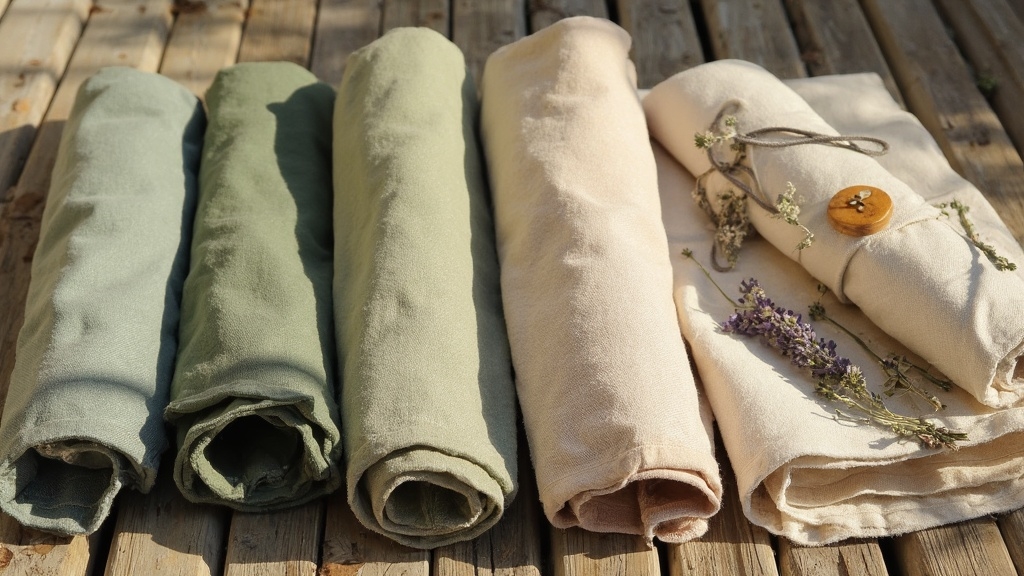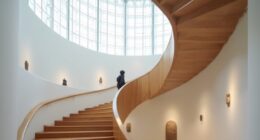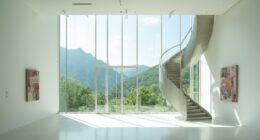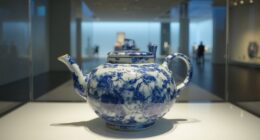Table of Contents Show
There may be products. Products are independently selected by our editors. We may earn an affiliate commission from the links with no charge to you, example: as Amazon Affiliate.
Kyoto Prefecture houses an extensive network of art museums showcasing Japan’s rich cultural heritage. The Kyoto National Museum, established in 1897, anchors the region’s art scene with over 15,000 artifacts. Modern institutions like the KYOCERA Museum blend contemporary design with traditional elements. Specialized venues include the Raku Museum for pottery and the Hosomi Museum for Edo-period masterpieces. From ancient temples to cutting-edge galleries, Kyoto’s artistic landscape reveals centuries of cultural evolution.
Key Takeaways
- Kyoto National Museum houses over 15,000 items and showcases Japanese art history through rotating exhibitions of its vast collection.
- The Museum of Modern Art features contemporary Japanese and Western pieces, with seasonal collection changes throughout the year.
- Specialized museums like the Raku Museum and Hosomi Museum focus on traditional Japanese arts including pottery and Edo-period masterpieces.
- The KYOCERA Museum of Art, Japan’s oldest public art museum, combines historic Crown Imperial architecture with modern design elements.
- Multiple traditional craft museums display textile works, bamboo art, and ceramics, highlighting Kyoto’s rich artisanal heritage.
Major Cultural Institutions and National Art Museums
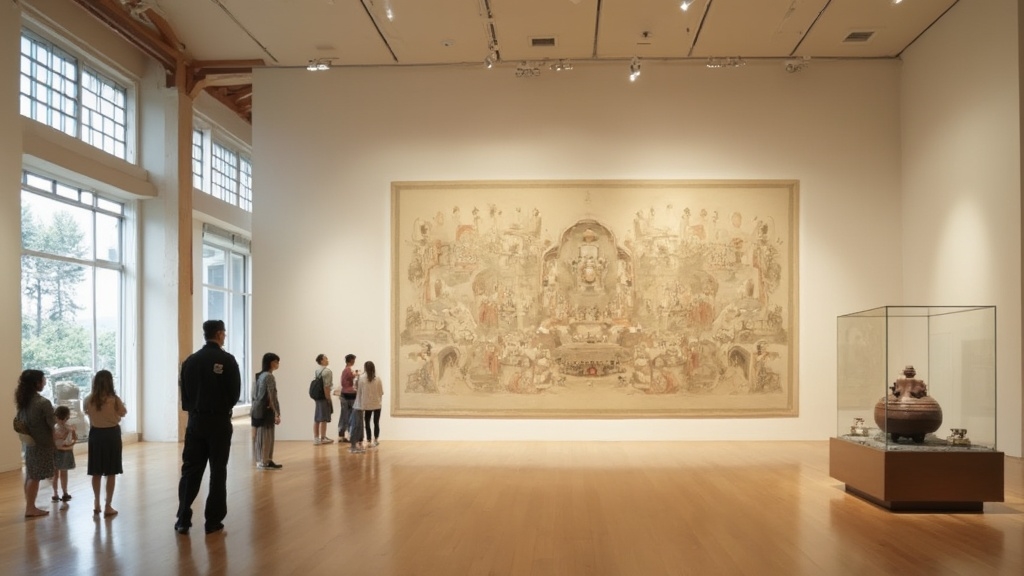
As Japan’s cultural heart, Kyoto houses several prestigious art museums that showcase both traditional and contemporary works. The city’s major cultural institutions serve as essential centers for art education and public engagement. The Kyoto National Museum, established in 1897, features over 15,000 items in its collection, including the modern Heisei Chishinkan Wing designed by Taniguchi Yoshi. In addition to its extensive collections, the museum plays a vital role in promoting cultural exploration through various public programs that encourage visitors to engage with art on a deeper level. The Museum of Modern Art focuses on post-industrialization Japanese and Western-influenced pieces, while the Municipal Museum of Art exhibits classical Western art and rotating collections. These institutions regularly host exhibitions, lectures, and concerts, fostering artistic appreciation among visitors. Traditional Japanese art forms are preserved through venues like the Kyoto Shibori Museum, where visitors can learn about dyeing techniques from expert artisans. The Kyoto Arts Center further enriches the cultural landscape by presenting diverse contemporary media and supporting emerging artists through various programs. The Kyoto National Museum was initially founded as the Imperial Museum of Kyoto to protect cultural properties during Japan’s rapid modernization. The museum’s collections include significant works from the Heian period, including horizontal picture scrolls that were primarily produced for the imperial court.
Traditional Japanese Art Collections and Heritage Sites
Kyoto’s traditional Japanese art collections reside within centuries-old temples, shrines, and heritage sites across the city. These historic venues showcase masterpieces of Buddhist art, painted scrolls, and religious artifacts that date back to the Heian period. Many temple collections feature rare examples of ceramic techniques developed by local artisans over generations. The National Museum of Modern Art enhances the city’s artistic legacy with its extensive Kawai Kanjiro Collection of ceramics. Designed by renowned architect Maki Fumihiko, the museum’s distinctive exterior features Portuguese granite and a symmetrical façade. Exploring these collections not only offers insight into Japan’s rich artistic history but also fosters cultural understanding and empathy as visitors connect with diverse artistic expressions.
The city’s heritage sites house significant collections of ukiyo-e prints, depicting scenes from Kyoto’s past and illustrating the evolution of Japanese artistic expression. Notable locations include the Kiyomizu-dera Temple complex, which maintains galleries of traditional crafts, and the Nijo Castle, featuring preserved wall paintings and decorative arts from the Edo period. These collections serve as living repositories of Japanese cultural heritage, offering visitors direct encounters with centuries of artistic achievement. Visitors seeking to experience traditional arts can participate in authentic tea ceremony demonstrations while exploring these cultural venues.
Modern and Contemporary Art Spaces
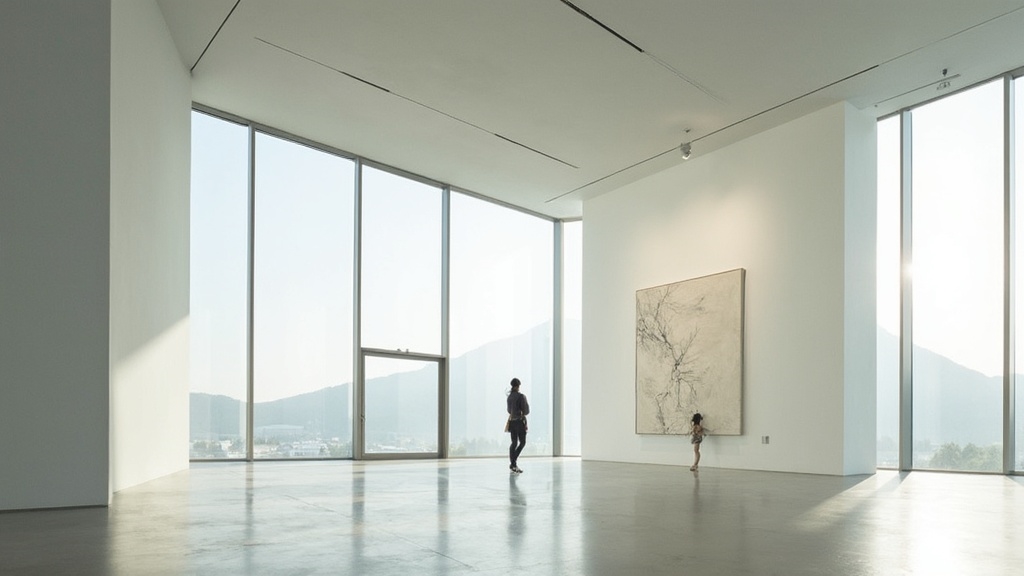
While preserving its traditional heritage, the ancient capital has embraced modern artistic expression through a network of contemporary museums and galleries. The National Museum of Modern Art anchors Kyoto’s contemporary scene, featuring rotating modern exhibitions of Western Japanese art, ceramics, and paintings near Heian Shrine. The museum’s seasonal collection changes ensure visitors experience fresh perspectives throughout the year. Notable spaces include the Kahitsukan Kyoto Museum of Contemporary Art and the Kyoto Arts Center, which hosts diverse contemporary installations and multimedia works. The Kodama Gallery, with its expansive 800-square-meter exhibition space, provides an important platform for local artists from both Osaka and Kyoto. This cultural melting pot exemplifies the thrill of experiencing diverse cultures that enriches artistic perspectives. Specialized galleries like Kaho Gallery and Mori Yu Gallery showcase emerging artists and art brut pieces. The architectural brilliance of the Asahi Group Oyamazaki Villa, designed by Tadao Ando, complements its modern art collection, exemplifying how Kyoto harmoniously blends innovative artistic spaces with its cultural legacy. Visitors can explore the rich cultural heritage of the region at the Museum of Traditional Crafts, where local artisans showcase centuries-old techniques and masterpieces.
Specialized Art Museums and Craft Galleries
Throughout the city’s diverse artistic landscape, specialized museums and craft galleries showcase Japan’s rich material heritage in dedicated venues. The Museum of Traditional Crafts exhibits textiles and bamboo works, while the Hosomi Museum features Edo-period masterpieces alongside a sukiya-style tearoom. The Nomura Art Museum specializes in medieval calligraphy, offering visitors intimate encounters with historical writing techniques. The Kaleidoscope Museum of Kyoto provides an extraordinary collection of handmade kaleidoscopes as unique art installations. The Raku Museum preserves and displays traditional pottery dating back to the 16th century. The Kiyomizu Sannenzaka Museum houses an impressive collection of late Edo artworks from the historical era, promoting genuine connections to historical craftsmanship through tangible experiences.
| Specialization | Notable Venues | Key Features |
|---|---|---|
| Traditional Crafts | Museum of Traditional Crafts | Textiles, Bamboo Works |
| Calligraphy Art | Nomura Art Museum | Medieval Scripts |
| Ceramics & Lacquerware | Museum of Oribe Furuta | Historical Collections |
These specialized galleries provide focused exhibitions of specific artistic disciplines, from intricate lacquerware techniques to extensive ceramics collections, preserving and presenting distinct aspects of Japanese cultural craftsmanship.
Historic Architecture and Art Museum Buildings
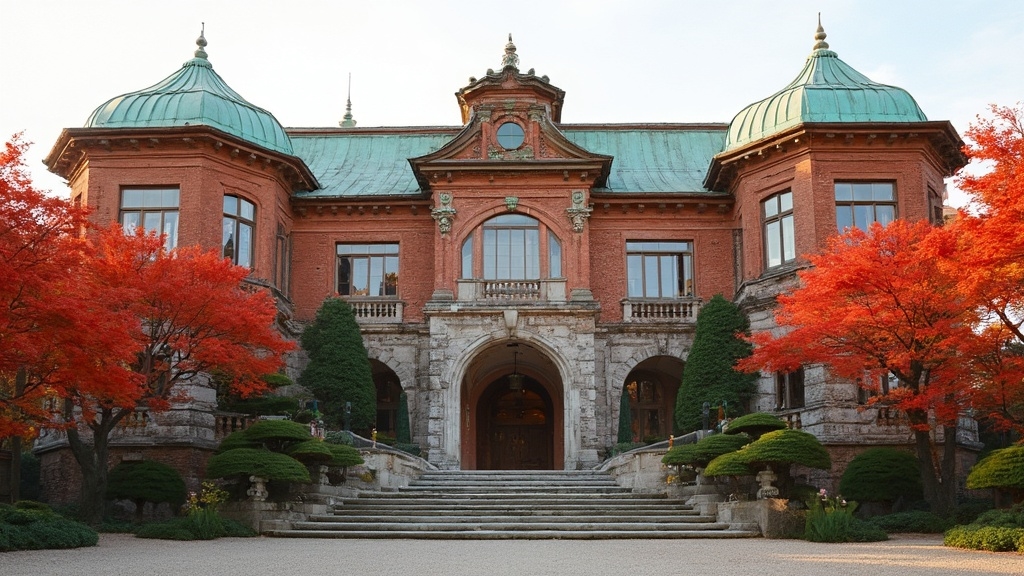
The architectural heritage of art museums in Kyoto reflects centuries of Japanese design evolution, from traditional imperial styles to modern renovations. The historic architecture of these cultural institutions showcases distinctive elements, particularly evident in the Kyoto City KYOCERA Museum of Art’s Crown Imperial Style main building from 1933. As Japan’s oldest existing public art museum, its recent renovations demonstrate thoughtful integration of contemporary elements while preserving historical features. The museum’s revitalization included creating a new glass ribbon that enhanced visitor amenities through an integrated museum shop and café space. Another remarkable example is the Kaburenjo Main Building Theater, featuring a structure made entirely of hinoki cypress that exemplifies traditional Japanese craftsmanship. The Kyoto National Museum, constructed in 1897, represents significant Meiji Period museum design through its Main Exhibition Hall, now known as the Meiji Kotokan Hall. Created by the Emperor’s Architect, this structure embodies the architectural ambitions of Japan’s modernization era, featuring a harmonious blend of Western and Japanese design principles that continue to influence museum architecture today. The building’s design masterfully incorporates Baroque elements while maintaining sensitivity to Kyoto’s natural landscape, illustrating how cultural exchange can transform architectural practices and enrich artistic expression.
Frequently Asked Questions
Which Kyoto Art Museums Offer Free Admission Days or Student Discounts?
Both Kyocera Museum of Art and Kyoto National Museum provide student discounts and free admission for seniors over 70. Students must present valid IDs. Gardens offer periodic free access.
Are Photography and Sketching Allowed Inside Kyoto’s Art Museum Galleries?
While visiting Japanese galleries, tourists discover photography is generally prohibited to protect artworks. Sketching policies vary by institution, with some requiring advance permission from museum staff.
What Are the Best Seasons to Visit Kyoto’s Art Museums?
Spring and autumn offer ideal museum experiences, when spring blooms and autumn foliage create stunning backdrops. March-May and October-November provide comfortable temperatures and special seasonal exhibitions throughout Kyoto’s cultural districts.
Which Art Museums in Kyoto Offer English-Language Audio Guides or Tours?
The Kyoto National Museum and Museum of Kyoto provide English audio guide options, while several institutions offer volunteer-led museum tour features in multiple languages throughout their permanent collections.
How Accessible Are Kyoto’s Art Museums for Visitors With Mobility Challenges?
Cultural institutions prioritize accessibility with wheelchair access at major venues like Kyoto National Museum and MOMAK. Public transportation hubs connect to barrier-free entrances, elevators and mobility assistance services.
Conclusion
Kyoto Prefecture’s art museums stand as irreplaceable cultural treasures, housing collections that span centuries of Japanese artistic achievement. From the mammoth National Museum that could hold a thousand lifetimes of art to intimate craft galleries, these institutions preserve and showcase both traditional and contemporary works. Together, they form an essential pillar of Japan’s artistic heritage and continue inspiring millions of visitors annually.
